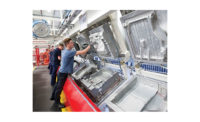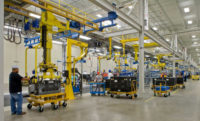I’m not an economist, but it’s clear to me that if I were a country, I’d want my economy to be grounded on the bedrock of making.
I use “making” pointedly, where making is the conversion of raw materials—dirt, rocks and sticks—into products. As a country, making would be my focus because it creates real value—not the paper kind of value realized through bundling debt and balance sheet malarkey, but real value, the price-minus-cost kind of value. The glamor may be in buying and selling companies, but the most powerful contributor of long-term value is making, because making means jobs.
When products are made in-country, the company gets the profit, but the country gets the jobs, which, for the economy, is far better. When citizens get paid to make, they can pay bills and buy things, and the country gets a cut to pay for schools, bridges and highways. This fundamental has been lost in the sea of our macroeconomic theory.
At the country level, we have begun to recognize that the U.S. is producing ever fewer engineers as a percentage of the world’s total. Some important people project that fewer engineers will lead to less innovation, reduce competitiveness and, in the long run, fundamentally hamper the economy. But I see it differently. Engineering is important on its own merits, but its real economic power stems from its control over making.
Design engineering chooses the raw materials for products. That choice that can favor one country’s raw materials over another’s, and the country that supplies the raw materials gets those making jobs. The engineering governs the jobs.
A country would like to supply lots of raw materials, but it wants it done efficiently. Design engineering decides the forms of those raw materials and how they will be used. This enables the most products to be made with the fewest natural resources. More recently, design engineering has added another powerful tool for natural resource efficiency: design for reuse and recycling.
Just as engineering influences which countries are in the running as suppliers of natural resources, it also defines which countries are viable for the making jobs. When work content is designed out, countries with high labor costs become viable and can effectively compete for the making jobs. If the product is designed to be put together in a simple way, and if it accommodates variation, countries with lesser developed quality systems become viable manufacturing locations. They, too, can compete effectively for the making jobs.
In the short term, there’s a lot a country can do to secure more making jobs, but this must be a long-term play. With a small investment, there are two things a country can do to get more than its share of making jobs over the long term.
First, stop the push strategy for STEM (education in science, technology, engineering and math). It has not worked because citizen-students don’t know why STEM is important. Start a pull strategy. Educate them on the benefits of STEM for them. Tell them STEM can help them pay for their kids’ schools. Tell them with STEM they can help their county have safe bridges. Tell them they can create a sustainable future with STEM.
Second, educate citizen-students on what making jobs are all about. Explain how they can earn a good living with making. Explain how they can provide for their family with making. Explain that making can be more than a job, that making can be a career.
Companies want profits, countries want jobs, and economies want both. The key that unlocks it all is our children.
Editor’s note: Mike Shipulski is a leading authority on lean manufacturing, product development, and design for manufacturing and assembly. His column will appear every other month, alternating with Austin Weber’s “On Campus.” E-mail Mike with comments via mike@shipulski.com or follow his blog at www.shipulski.com.







